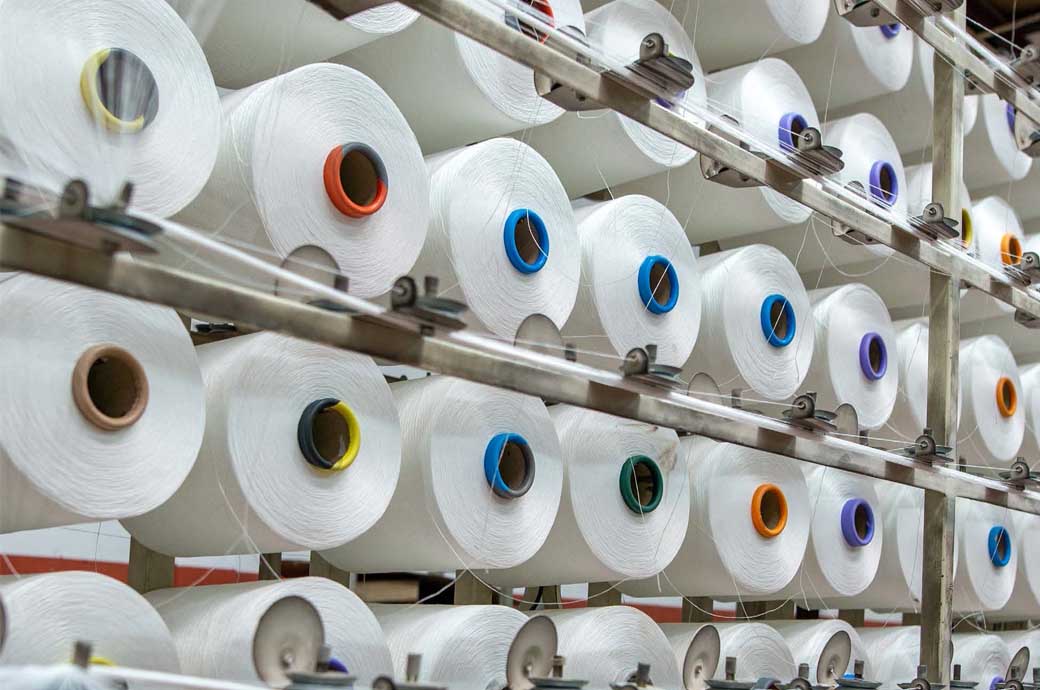
Most are either ramping up their usage or concealing the true scale of their dependency. They are employing tactics similar to those used by the fossil fuel industry, i.e., denying the severity of plastic pollution, distracting the public and regulators with false solutions and actively stalling meaningful efforts to address it, particularly in the case of microplastic pollution, it said.
The report uncovered the industry’s ‘lacklustre’ support for meaningful legislation and underscores the urgent need for strong action from regulators, as half-hearted measures will only allow the fast fashion cycle to continue, it said in a report titled ‘Plastic Paralysis: How Brands Resist Change and Fuel Microplastic Pollution’.
It evaluated 50 major fashion brands on their use of synthetic fibres and their policies and strategies to address microplastic pollution. The survey was conducted in collaboration with Clean Clothes Campaign, Fashion Revolution, No Plastic in My Sea and the Plastic Soup Foundation.
The level of corporate secrecy has more than tripled since these surveys began in 2021. More than half the companies (54 per cent, 27 brands) failed to respond to the survey in part or full, compared to 44 per cent in 2022 and 17 per cent in 2021. Companies are keeping their true dependency on synthetics under wraps, the report noted.
Only two companies (4 per cent) achieved the top category, ‘leading the shift’.
Nearly all (45 out of 50) companies remained in the lowest two categories: ‘trailing behind’, marked by limited transparency and a heavy or increasing reliance on synthetics, and the ‘red zone’, defined by minimal or no transparency.
The 29 companies in the red zone included a mix of fast fashion, sports and luxury brands, department stores and companies that tout their sustainability.
Discouragingly, since the publication of our first survey, around half of the companies (11 out of 23) that responded have increased their use of synthetics. Five maintained their use of synthetics with insubstantial fluctuations, and only three companies decreased it. Four companies left this section blank. Coupled with the remaining 27 companies that didn’t respond to the survey, this shows a disturbing lack of transparency, the report noted.
Given that synthetic fibres are projected to reach 73 per cent of textile production by 2030, it is likely that most of these brands are expanding their use of synthetics.
Four brands that promised to reduce their use of synthetics in 2022 actually expanded their synthetic share or volume from 2022 to 2024.
“The fashion industry is using tactics from the playbook of sectors such as tobacco and fossil fuels to delay and distract from meaningful transformation,” the report said.
Around 34 per cent cited the need for further research as a reason to postpone action, showing their reluctance to acknowledge the mounting scientific consensus.
Six companies cited a need for standardised methods to measure microfibre release and more research on the impacts, even though The Microfibre Consortium (TMC) developed a standard test method to quantify fibre loss from fabrics in 2021.
Instead of developing specific and time-bound policies and strategies, many brands use a common smokescreen tactic to address microplastic pollution: joining industry-created sustainability initiatives such as TMC, Fashion For Good, ZDHC and the Japan Clean Ocean Material Alliance.
For 16 out of 50 companies (32 per cent), such memberships were their only strategy to address microfibres, even though simply signing up doesn’t ensure any meaningful action against microfibre pollution, the report noted.
Significantly, 21 out of 50 brands (42 per cent) were signatories of TMC, which positions itself as a leading initiative in addressing microfibre pollution. The initiative downplays the risks of microplastics, treating them as no more harmful than natural fibres, which allows signatory brands to maintain the status quo while appearing proactive, it said.
The industry is trying to shift the narrative away from the plastic problem by arguing that all microfibres, regardless of their source, are equally problematic, contrary to scientific findings that specifically highlight the dangers posed by microplastics.
TMC has channelled funding into research suggesting that microfibre pollution predominantly arises from natural fibres like cotton and wool rather than synthetics, using this as an argument against focusing on synthetics, it said.
The initiative claims that “microfibre pollution should no longer be a microplastic-only debate” and such a perspective is “simplistic, and ignores the evidence”.
However, scientific findings show that, among microfibres, microplastics pose the greatest threat to the environment and human health. These arguments are tactics by the fashion industry to distract policymakers from its contribution to plastic pollution, the report observed.
The second most common strategy was offering consumers guidance on garment care and recommending the installation of washing machine filters to prevent microplastics from clothes entering the environment. This approach not only passes the baton to consumers, allowing brands to wash their hands of any accountability, but also focuses on cleaning up the aftermath rather than preventing the problem at its source, the report said.
The survey explored where brands stand on upcoming European Union legislation and the global plastic pollution treaty, especially regarding microplastic pollution from textiles. Only 22 per cent respondents that answered this section of the questionnaire said they were in favour of all the measures listed.
The most significant backing was for including microplastic emissions as an environmental performance indicator in the PEF. However, most brands failed to back their support with public policy statements or other concrete evidence.
This tepid response suggests that many brands are employing yet another delay tactic. Their weak support for legislation indicates a preference for maintaining the status quo rather than embracing meaningful change, the report added.
Fibre2Fashion News Desk (DS)